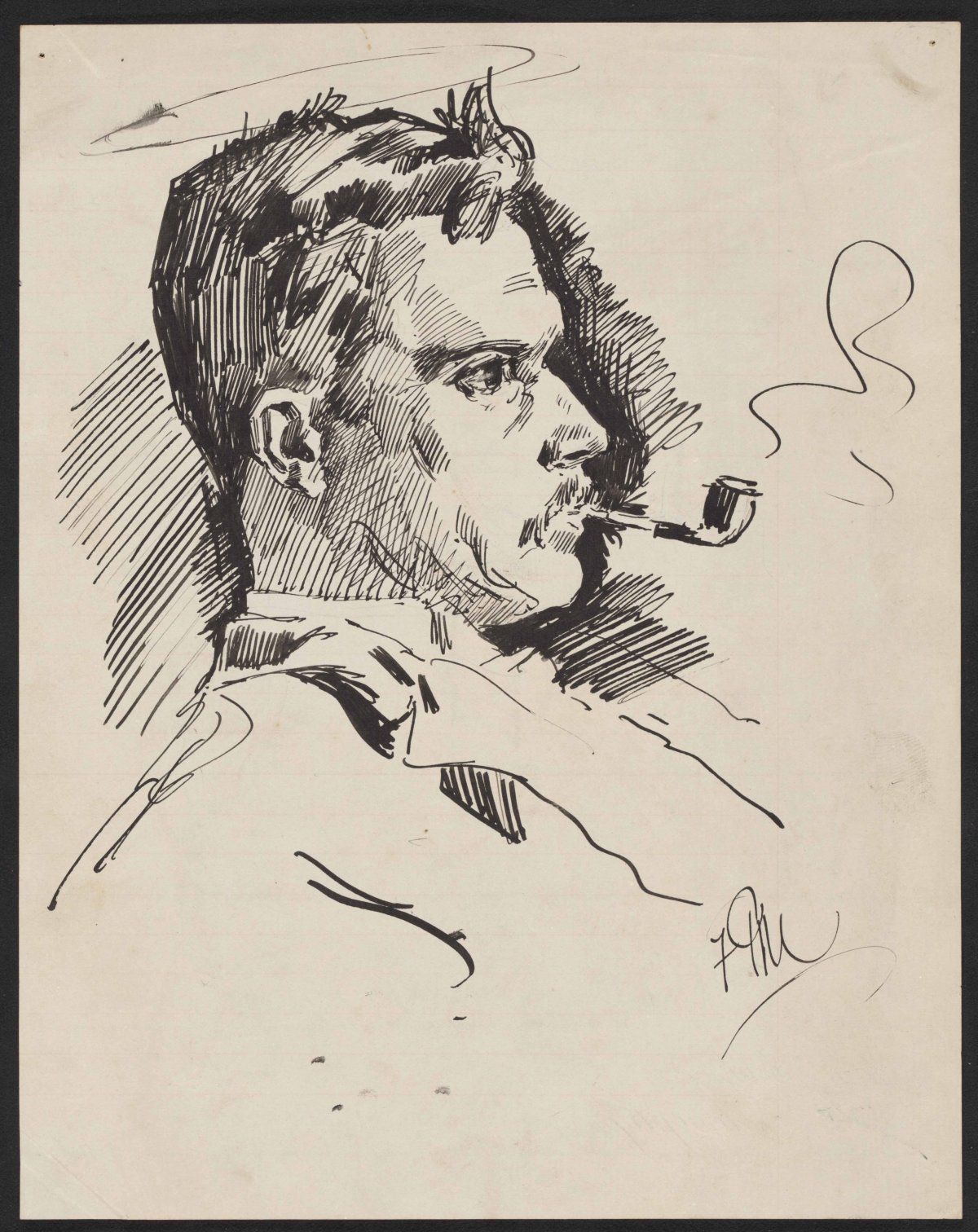Due to scheduled maintenance, the National Library’s online services will be unavailable between 8pm on Saturday 7 December and 11am on Sunday 8 December (AEDT). Find out more.
The Picturesque Atlas of Australasia and its principal Sydney-based artists—Julian Ashton, A. Henry Fullwood and Frank Mahony—transformed the way settler colonial Australia was seen both here and around the world. It was they and their fellow artist–illustrators who, by creating the art most often seen by Australians, made Australia ‘one of the most important centres of black-and-white art in the world,’ as noted in 1945 by Bernard Smith in Place, Taste and Tradition.
Notwithstanding the contributions of Ashton, Fullwood, Mahony and a host of other colonial artists—including William Macleod, Constance Roth, Ellis Rowan, W.C. Piguenit, Livingston Hopkins, and George Ashton—the Atlas was fundamentally the creation of American artists, cartographers, engravers, printers and canvassers. As a result of this unique combination of American and British–Australian talents, its publication was hailed by The Freeman’s Journal in 1886 as marking ‘the birth of Art … beneath the Southern Cross’.
Julian Ashton, the father of Australian art

Cazneaux, Harold, 1878-1953. (1920). Julian Ashton, the teacher [picture] / H. Cazneaux. https://nla.gov.au/nla.obj-140191224

Fairfax Corporation. (1927). Artist Julian Ashton conducting a figure drawing class alongside a model, Sydney, August, 1927 [picture]. http://nla.gov.au/nla.obj-162720133

Grafton Galleries (London, England) & National Art Gallery of New South Wales. (1898). Exhibition of Australian art in London : Grafton Galleries, Grafton Street, London, W., 2nd April to 7th May, 1898 / promoted by the Trustees of the National Art Gallery of New South Wales. [London : Grafton Galleries] http://nla.gov.au/nla.obj-52857935
Julian Ashton was a man on a mission ‘to form a school of Australian artists who would draw their inspiration’ from the land in which they lived.
As President of the Art Society of New South Wales and a Trustee of the National Art Gallery of New South Wales, Ashton persuaded the government to set aside £500 annually for the purchase of works by Australia’s settler colonial artists.
In 1895 Ashton broke away from the Art Society to establish his own art school, where he taught the likes of George Lambert, Sydney Long, Grace Crowley and Thea Proctor. Ashton was also instrumental in putting Sydney’s artists on the world stage, initially at the 1893 World’s Columbian Exposition in Chicago, and five years later at the Exhibition of Australian Art in London, held at Grafton Gallery. In both of these settings, the original drawings and engravings of the Atlas, as well as works by Ashton, Fullwood and Mahony, were prominently on view.
Ashton’s artistic reputation has since been eclipsed by his status among his peers as ‘the father of Australian art’.
A. Henry Fullwood, a Sydney impressionist

The Art of Henry Fullwood (1927, September 18). The Daily Telegraph (Sydney, NSW : 1883 - 1930), p. 22. http://nla.gov.au/nla.news-article247925885
Fullwood went on to become The Sydney Mail’s principal artist, an acclaimed ‘impressionist’ painter, and a staunch advocate of the rights of professional artworkers.
A collapsing art market drove Fullwood to London, where he enjoyed only modest success before becoming one of Australia’s official war artists.
Frank Mahony, our man at The Bulletin

Mahony, Frank, 1862-1916. (1900). [Self-portrait] [picture] / F.P.M. http://nla.gov.au/nla.obj-136050024
The Australian-born and trained Mahony was already marked out by The Illustrated Sydney News in 1889 as someone on whom ‘Australia … depends for artistic name and fame.’
Mahony’s success at the Atlas ignited his career as an illustrator for The Bulletin. His cartoons of bush life perfectly captured the rough humour—often racist and misogynist—of the ‘bushman’s bible’, while his illustrations of the books of Henry Lawson, ‘Banjo’ Paterson, and Steele Rudd forever linked him to The Legend of the Nineties.
Mahony’s artistic reputation both then and now has largely rested on his prowess as a gifted painter of livestock, bushrangers, and mounted stockmen.
Activities
Influential School
Have students investigate the history of the Julian Ashton Art School, and its alumni. Why has it produced so many successful Australian artists? Use this Trove search as a starting point.
For example, you might allocate an artist who attended the School to each student for a short research task. They should briefly outline the artist’s association with the School, and their career highlights following.
Fullwood’s Landscapes
The National Library holds a digitised collection of 34 landscape oils which are attibuted to A. Henry Fullwood around 1904.
Assign a picture to each student and have them annotate it, identifying key characteristics of the Australian impressionist or Heidelberg style. They should also express their opinions on the style/school and reflect on any influence it may have had in their own artmaking.
Ask students to present their work to the class using a slideshow.
Our man at The Bulletin
The National Library of Australia provides access to a full digitised set of issues of The Bulletin. Frank Mahony contributed artwork to the publication from the 1890s. Have students use the Trove Digital Library viewer using the link above to locate examples of his work.
Watch this video from 2019 where National Library Director of Exhibitions Dr Guy Hansen examines cartooning in The Bulletin. At [17:45], Dr Hansen talks about the smaller ‘gag cartoons’ scattered throughout its pages. Many of these were drawn by Frank Mahony. They depict short conversations between characters, often with a funny punchline. If you have trouble viewing video on Facebook at school, the audio and transcript of the talk is here.




